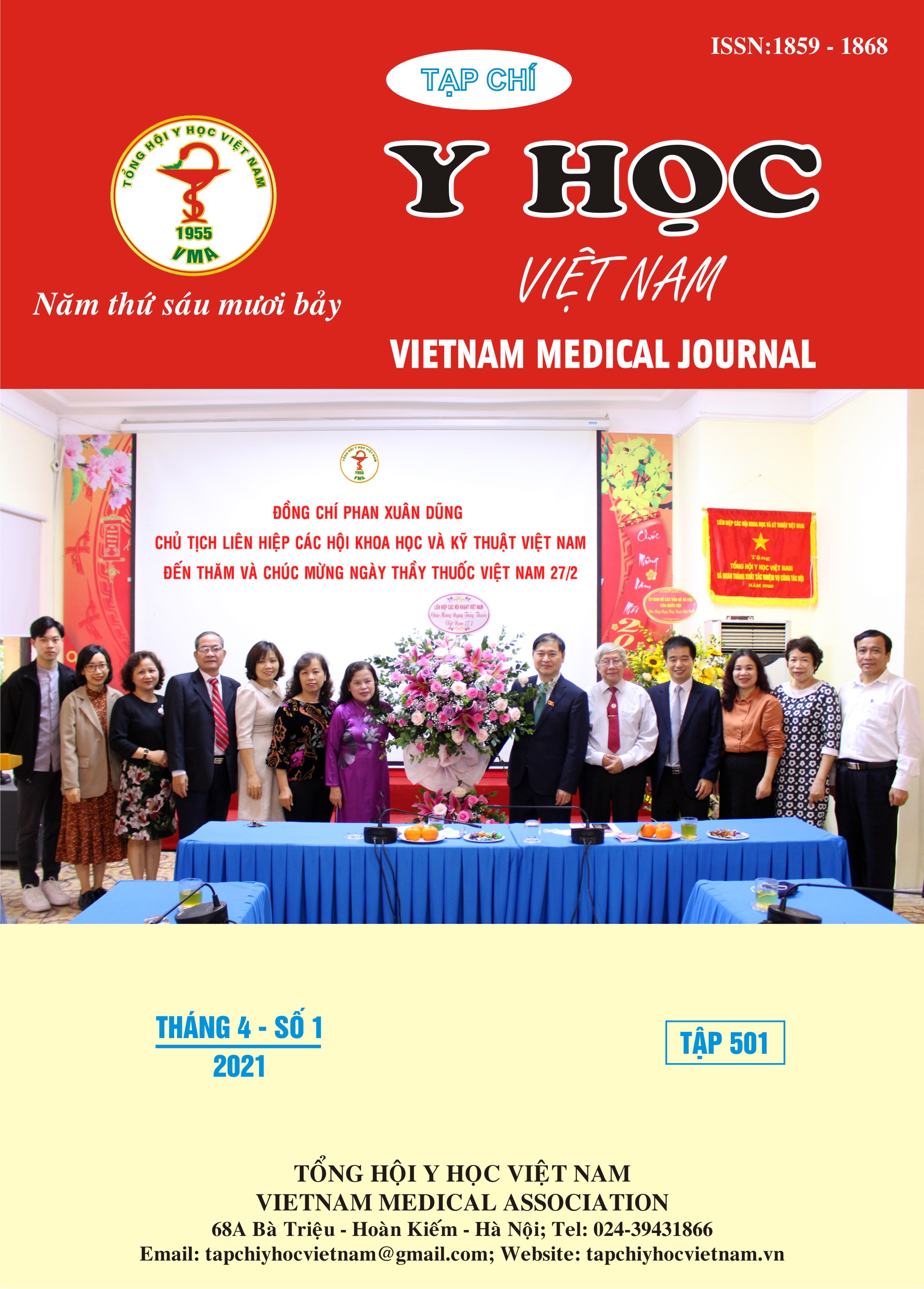INVESTIGATION OF THE FACTORS RELATED TO THE SEVERITY OF CLINICAL HEPATIC ENCEPHALOPATHY BESED ON WEST HAVEN CRITERIA
Main Article Content
Abstract
Objective: To investigate the factors associated with the severity of clinical hepatic encephalopathy (BNG) based on West Haven criteria. Methods: A descriptive cross-sectional study was conducted on 146 cirrhotic patients with clinical complications of BNG (BNG grade II, III and IV according to West Haven criteria). Diagnostic criteria for cirrhosis include hepatocellular insufficiency syndrome and portal hypertension syndrome; abdominal ultrasound or computed tomography (CT scan) of the abdomen with chronic liver damage (rough structure, many neoplastic nodules, irregular margins...). Diagnostic criteria for clinical BNG include clinical characteristics of BNG with excluding other causes of psychosis. The factors including gastrointestinal bleeding, infection (primary infectious peritonitis, respiratory infection, urinary tract infection...), hypokalemia, hyponatremia, constipation, diarrhea and anesthetics were analyzed. Results: The mean age was 51.24 ± 13.37, the male gender rate was 71.2%, higher than that of the female (28.8%). The proportion of patients with chronic hepatitis due to hepatitis B virus accounted for 40.4%, followed by alcohol (21.9%) and hepatitis C virus (19.2%). Infectious factor accounted for the highest proportion (54.1%), followed by hyponatremia (37%), gastrointestinal bleeding (36.3%) and hypokalemia (32.3%). Infectious factors and hyponatremia were associated with the severity of hepatic encephalopathy (p = 0.002 and p = 0.001). Conclusion: Infectious factors and hyponatremia were associated with hepatic encephalopathy and the severity of the disease.
Article Details
Keywords
hepatic encephalopathy, cirrhosis, predisposing factor, infection
References
2. Quero Guillen JC, Herrerias Gutierrez JM. Diagnostic methods in hepatic encephalopathy. Clinica Chimica Acta. 2006; 365: 1-8.
3. Jepsen P, Ott P, Andersen PK, Soresen HT, Vilstrup H. The clinical course of alcoholic liver cirrhosis: a Danish population-based cohort study. Hepatology. 2010; 51: 1675-1682.
4. Sharma BC, Sharma P, Agrawal A, Sarin SK. Secondary prophylaxis of hepatic encephalopathy: an open-label randomized controlled trial of lactulose versus placebo. Gastroenterology. 2009; 137: 885-891.
5. Lê Hà Xuân Sơn. Khảo sát mối tương quan giữa các yếu tố thúc đẩy và tử vong trên bệnh nhân Bệnh não gan loại C. Luận văn tốt nghiệp bác sĩ nội trú, Đại học Y khoa Phạm Ngọc Thạch. 2015. tr. 1-70.
6. Mumtaz K, Ahmed US, Abid S, Baig N, Hamid S, Jafri W. Precipitating Factors and The Outcome of Hepatic Encephalopathy in Liver Cirrhosis. Journal of the College of Physicians and Surgeons Pakistan. 2010; 20(8):514-518.
7. Shawcross DL, Davies NA, Williams R, Jalan R. Systemic inflammatory response exacerbates the neuropsychological effects of induced hyperammonemia in cirrhosis. Journal of Hepatology. 2004; 40(2):247-254.
8. Atluri DK, Prakash R, Mullen KD. Pathogenesis, diagnosis, and treatment of hepatic encephalopathy. Journal of Clinical and Experimental Hepatology. 2011; 1(2): 77-86.


